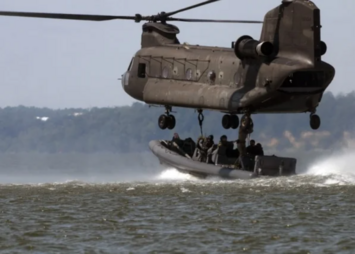Underslung Load

Underslung load operations, also known as external load operations or slingwork, involve lifting and transporting cargo beneath a helicopter or aircraft via a cargo hook or sling. This method has been used in both military and civilian applications for decades, with a history stretching back to the early days of helicopter flight.
Early Development and Military Applications
Early Days: The earliest forms of underslung loads involved using cargo hooks to lift and transport supplies, vehicles, and even small boats, primarily in support of military operations.
World War II and Beyond: During World War II and the Korean War, helicopters were increasingly used for external load operations, transporting troops, supplies, and equipment to remote locations.
Vietnam War: The Vietnam War further solidified the role of helicopters in underslung load operations, with helicopters playing a vital role in transporting equipment and personnel to combat zones.
Modern Military Applications: Today, underslung load operations are a standard practice in military operations, used for a variety of tasks, including:
- Logistical support: Transporting supplies, equipment, and fuel to remote locations.
- Personnel movement: Transporting troops and personnel to areas inaccessible by ground vehicles.
- Rescue operations: Lifting and carrying injured individuals from remote locations.
- Equipment transport: Moving heavy machinery and equipment to construction sites and other remote areas.
Civilian Applications
Logistical Support: Underslung loads are used for transporting materials and equipment to remote locations, such as logging operations, construction sites, and oil fields.
Rescue Operations: Helicopters equipped with cargo hooks are used to rescue individuals stranded in remote areas, such as mountains or rivers.
Aerial Firefighting: Helicopters with water buckets or fire retardant tanks are used to drop water or fire retardant on wildfires.
Construction and Utility Work: Helicopters are used to lift and transport heavy equipment and materials, such as power lines, to construction sites.
Challenges and Safety
Complex Operations: Underslung load operations require specialized training and expertise from helicopter pilots and ground crews.
Dynamic Load Effects: The weight and size of the load, along with the wind and turbulence, can create dynamic loads that can be challenging to manage.
Safety Regulations: To ensure safe operations, underslung load procedures are governed by regulations and guidelines issued by aviation authorities, according to the Joint Air Power Competence Centre.
Risk Management: Operators must have a thorough understanding of the risks associated with underslung load operations and implement appropriate safety measures to mitigate those risks, says the Flight Safety Foundation.
